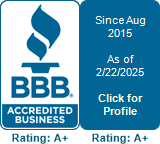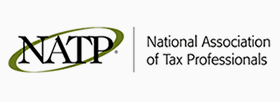Who Can Benefit from Section 199A 20% Deduction?
Most Americans realize that Congress passed a Tax Cuts and Jobs Act (so-called Tax Reform) effective for 2018. It is also well known that the Tax Reform legislation will result in reduced taxes for many corporations and individuals. What may not be known is that the legislation was a compromise in that so-called “C” Corporations will recognize tax reductions, but individuals (particularly those in the middle class) will benefit little, if at all, from the Act. In order to provide at least some benefit to a large number of middle class taxpayers, congress decided to provide benefit through tax deductions for many small businesses via what is known as the Section 199A 20% deduction.
The 199A 20% deduction is in fact a potential tax reduction for shareholders, partners, and others who are engaged in business through the use of a pass through entity. Pass through entities are those which do not pay tax themselves but instead the tax is reported and paid by the shareholders or partners individually of, for example, partnerships and S Corporations. The new 199A tax deduction will allow for 20% of the reported profit by some of those entities to be deducted by the shareholders and partners, before the applicable tax on the entities’ profits is calculated by each partner or shareholder.
Who can utilize the benefits of this generous deduction?
1. “Qualifying” businesses. Most businesses are qualifying, except for specified service businesses such as law firms, accounting firms, etc.
2. The deduction for qualifying shareholders and partners is limited if their taxable income exceeds $315,000 for married couples filing joint returns or $157,500 for all other taxpayers (if taxable income for a married couple filing a joint turn is between $315,000 and $415,000 then the limitation is phased in, as is the limitation for all other taxpayer’s phased in when their taxable income is between $157,500 and $207,500). There are other limitations based on W-2 wages paid by the pass through businesses, and excess basis of property held by the business.
3. Recipients of REIT dividends.
How is the deduction calculated?
Generally it is 20% of the lesser of qualified business income and an amount equal to 20 percent of the taxpayer’s taxable income minus the taxpayer’s net capital gain, plus 20% of REIT dividends.
Deduction is calculated for each individual, not each business.
What is qualified business income?
Includes: income, gain, deduction and loss from a qualified trade or business that is considered to be connected with a US trade or business. Capital gains, and losses, dividends and interest income are excluded.
How is real estate ownership affected by Section 199A?
Newly issued regulations specify the conditions under which landlords may qualify for the Section 199A deduction. The regulations provide safe harbors for real estate investors to be considered to be operating an active business. That is required for the business to qualify for the deduction under Section 199A.
This is a complicated subject and you are best served by talking to us or have us assist you with your tax returns.
We look forward to hearing from you.
Steve Masler




